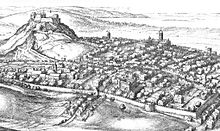
Clan Campbell is a Highland Scottish clan, historically one of the largest and most powerful of the Highland clans. The Clan Campbell lands are in Argyll and within their lands lies Ben Cruachan. The chief of the clan became Earl of Argyll and later Duke of Argyll.

John Maitland, 1st Duke and 2nd Earl of Lauderdale, 3rd Lord Maitland of Thirlestane KG PC was a Scottish politician and leader within the Cabal Ministry.
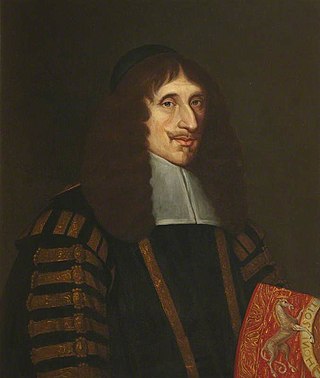
John Campbell, 1st Earl of Loudoun was a Scottish politician and Covenanter.

Archibald Campbell, Marquess of Argyll, 8th Earl of Argyll, Chief of Clan Campbell was a Scottish nobleman, politician, and peer. The de facto head of Scotland's government during most of the conflict of the 1640s and 1650s known as the Wars of the Three Kingdoms, he was a major figure in the Covenanter movement that fought for the maintenance of the Presbyterian religion against the Stuart monarchy's attempts to impose episcopacy. He is often remembered as the principal opponent of the royalist general James Graham, 1st Marquess of Montrose.

Between 1639 and 1652, Scotland was involved in the Wars of the Three Kingdoms, a series of wars starting with the Bishops' Wars, the Irish Rebellion of 1641, the English Civil War, the Irish Confederate Wars, and finally the subjugation of Ireland and Scotland by the English Roundhead New Model Army.

The Engagers were a faction of the Scottish Covenanters, who made "The Engagement" with King Charles I in December 1647 while he was imprisoned in Carisbrooke Castle by the English Parliamentarians after his defeat in the First Civil War.
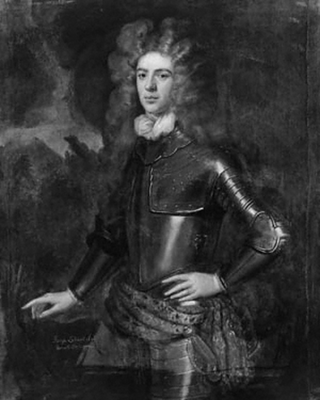
Sir George Lockhart of Lee, of Carnwath, South Lanarkshire, also known as Lockhart of Carnwath, was a Scottish writer and Jacobite politician who sat in the Parliament of Scotland from 1702 to 1707 and as a Tory in the House of Commons from 1708 to 1715. He was a member of the Commission on the Union before 1707 but acted as an informant to his Jacobite colleagues and later wrote an anonymous memoir of its dealings. He supported the Stuart cause in the Jacobite rising of 1715.
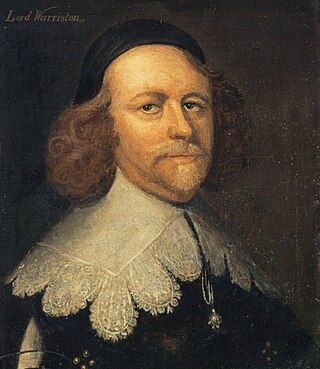
Archibald Johnston, Lord Wariston was a Scottish judge and statesman.
The Committee of Both Kingdoms,, was a committee set up during the Wars of the Three Kingdoms by the Parliamentarian faction in association with representatives from the Scottish Covenanters, after they made an alliance in late 1643.
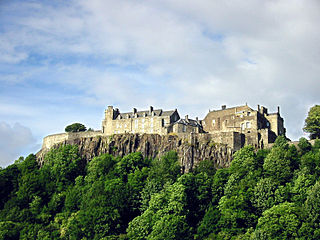
The second Battle of Stirling was fought on 12 September 1648 during the Scottish Civil War of the 17th century. The battle was fought between the Engagers who were a faction of the Scottish Covenanters under the command of George Munro, 1st of Newmore and who had made "The Engagement" with Charles I of England in December 1647, against the Kirk Party who were a radical Presbyterian faction of the Scottish Covenanters who were under the command of Archibald Campbell, 1st Marquess of Argyll.
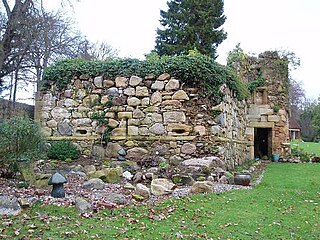
Sir George Munro, 1st of Newmore (1602–1693) was a 17th-century Scottish soldier and member of parliament from the Clan Munro, Ross-shire, Scotland. He was seated at Newmore Castle. Between 1629 and 1634 Munro held command in the Swedish army during the Thirty Years' War, and from 1642 in the Scottish Covenanter army during the Irish Confederate Wars before changing his allegiance to the Royalist cause of Charles I in 1648 during the Scottish Civil War and Irish Confederate Wars.

Castle Campbell is a medieval castle situated above the town of Dollar, Clackmannanshire, in central Scotland. It was the lowland seat of the earls and dukes of Argyll, chiefs of Clan Campbell, from the 15th to the 19th century, and was visited by Mary, Queen of Scots, in the 16th century. Mary was impressed by this and said "this reminds me of home".

The Battle of Preston, fought largely at Walton-le-Dale near Preston in Lancashire, resulted in a victory for the New Model Army under the command of Oliver Cromwell over the Royalists and Scots Engagers commanded by the Duke of Hamilton. The Parliamentarian victory presaged the end of the Second English Civil War.
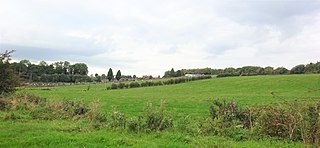
The Battle of Mauchline Muir was an engagement fought on 12 June 1648 between two rival factions of the Covenanters of Scotland. On one side were those who favoured The Engagement, known as Engagers, and on the other those who were opposed to the Engagement, and known as the Kirk party.
Archibald Strachan was a Scottish soldier who fought in the Wars of the Three Kingdoms, reaching the rank of colonel.
William Drummond, 1st Viscount of Strathallan, Lord Drummond of Cromlix, was a Scottish soldier and politician. He served as a Commissioner for Perthshire in the parliaments of 1669–74, 1681–2 and 1685–6, and at the Convention of Estates of 1678.
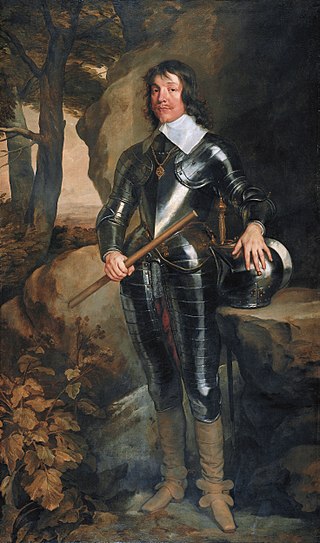
James Hamilton, 1st Duke of Hamilton, KG, PC, known as the 3rd Marquess of Hamilton from March 1625 until April 1643, was a Scottish nobleman and influential political and military leader during the Thirty Years' War and the Wars of the Three Kingdoms.
John Kennedy, 6th Earl of Cassilis, PC was a Scottish peer, the grandson of Gilbert Kennedy, 4th Earl of Cassilis, and nephew of John Kennedy, 5th Earl of Cassilis. He succeeded to the titles of 8th Lord Kennedy and 6th Earl of Cassilis on 25 July 1616. He was a non-sitting member of Cromwell's House of Lords, and was invested as a Privy Counsellor of Scotland on 13 February 1660/61. He held the office of Justice-general from 1649 to 1651 and of an Extraordinary Lord of Session for Scotland from June 1661 to July 1662.

Alexander Montgomerie, 6th Earl of Eglinton was a Scottish aristocrat and soldier, originally known as Sir Alexander Seton of Foulstruther.

Hugh Montgomerie, 7th Earl of Eglinton was a Scottish landowner.
